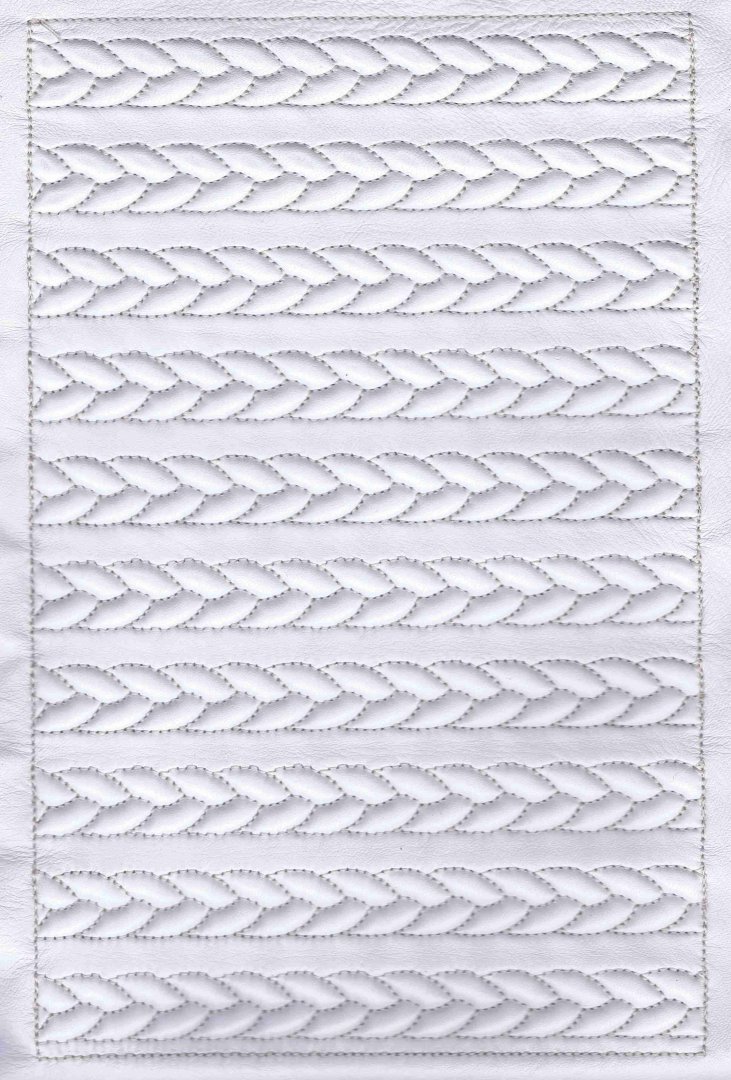The charm of 3D effect embroidery: techniques, materials and tips for unique creations
This technique is based on the use of a special grommet, placed under the fabric to be embroidered or between it and the embroidery, capable of giving creations a surprising sense of depth and relief, thus transforming a simple piece of fabric into a three-dimensional work of art. This mode of embroidery lends itself beautifully to making geometric patterns, logos, or emphasizing specific details of a design.

If you are passionate about textiles and looking for a way to take your creations to a new level, you've come to the right place. Let's find out together how to master the art of 3D embroidery, from the materials needed to basic techniques.
Essential materials for 3D embroidery: choosing the right rubber
Rubber selection is crucial for 3D embroidery. This material, available in a variety of thicknesses, should be chosen based on the type of three-dimensional effect desired. Thicker rubbers offer a more pronounced relief, ideal for bold, eye-catching designs. Conversely, lesser thicknesses are perfect for delicate and refined details. It is essential to purchase high-quality erasers, preferably from suppliers who specialize in embroidery materials, to ensure the durability and effectiveness of the finished work.
Preparing fabric for 3D embroidery: tips and techniques
Before starting embroidery, it is essential to properly prepare the fabric and rubber. This step includes stabilizing the fabric to prevent it from warping during the embroidery process. The use of a well-stretched frame and the use of specific backing materials or adhesives are key practices. In addition, it is important to properly place the rubber under or on top of the fabric, making sure it adheres snugly to prevent shifting during embroidery.
Color play: using contrasting colors in 3D embroidery
Color selection is a crucial aspect of the design process and can completely transform the look of an embroidered piece. To choose the most appropriate colors, consider the overall theme of your project and the message you wish to convey through your work.
If you choose to use strands with contrasting hues, it is important to maintain a balance between bright and subdued colors to prevent the design from becoming too overloaded. The goal is to use contrast in your favor, clearly delineating the details of the design and accentuating the three-dimensional effect. Experimenting with different color combinations on small fabric swatches can help you visualize the end result and make color palette decisions.
Expert advice: maintaining and caring for 3D embroidered fabrics
Maintaining and caring for 3D embroidered fabrics is critical to preserving the beauty and integrity of your creations over time. Fabrics embroidered with this technique require special care because of their prominence and intricate details. To ensure that your work remains as good as new, it is important to follow a few recommendations.
First, it is crucial to avoid machine washing of 3D embroidered fabrics. Prefer hand washing with cold water, using mild detergents for fine fabrics. This method helps prevent damage to the three-dimensional structure of the embroidery. When washing, handle the fabric with care, avoiding rubbing or twisting that could deform the embroidery.
After washing, dry the fabric horizontally on a flat surface. Avoid using tumble dryers or direct exposure to the sun, as excessive heat can alter thread colors and damage the embroidery texture. If necessary, iron the fabric inside out, using a protective cloth between the iron and the embroidery to avoid direct contact with heat.
Resources and tools for 3D embroidery enthusiasts: where to delve and buy
For those who wish to delve deeper into the 3D embroidery effect technique or purchase quality materials, there are numerous online and offline resources. Websites specializing in textile crafts and embroidery offer detailed tutorials, demonstration videos, and blogs full of practical tips for honing your 3D embroidery skills. Platforms such as YouTube and Pinterest are also valuable for finding inspiration and step-by-step guides.
To purchase materials, consider online and physical stores specializing in embroidery supplies that offer a wide range of threads, 3D embroidery erasers, fabrics and other essential tools. Attending craft fairs and workshops can also be a great opportunity to discover new materials and tools, as well as allow you to exchange tips and techniques with other embroidery enthusiasts.
Conclusions and future prospects of 3D effect embroidery in crafts and design
3D effect embroidery is emerging as a prominent technique in textile craft and design, offering endless creative possibilities. Continued innovation in this field promises to bring new techniques, materials, and applications, further expanding the horizon for craft enthusiasts and professionals.
As technologies evolve and interest in personalized, high-quality craftsmanship increases, 3D embroidery is set to play a significant role in the future of textile design. The focus on sustainability and the use of eco-friendly materials could also influence future 3D embroidery trends, leading to new embroidery techniques that not only enhance aesthetics but also promote more environmentally friendly practices.
In conclusion, 3D effect embroidery offers a world of possibilities to explore and experiment with, allowing artisans to transform simple pieces of fabric into three-dimensional works of art. With the right techniques, tools and proper care, your 3D embroidered creations will continue to enchant and inspire for years to come.